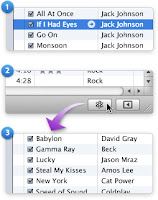
This week, I went to Schotzi's again on Thursday night to watch two bands: Shane Smith and The Secret of Boris. The website said that it would start at 9:00, but when I arrived at 9:30 they were still in the process of sound testing. In fact, they continued sound testing until about 10:10, at which point some of the band actually did some karaoke inside. Despite the large genre difference between the artists, they actually seemed to have a rapport with one another.
 As far as attendance went, by 10:00 there were only 20 people in the bar, not including the artists. By 11:00, there was only somewhere between 30 and 35. At about 11:30 however, that number nearly doubled. I do believe that this increase is due more to the time than the bands, because most of these people didn't go outside or upstairs to watch them.
As far as attendance went, by 10:00 there were only 20 people in the bar, not including the artists. By 11:00, there was only somewhere between 30 and 35. At about 11:30 however, that number nearly doubled. I do believe that this increase is due more to the time than the bands, because most of these people didn't go outside or upstairs to watch them. By the time I left at slightly past midnight, nearly 100 people were in the bar as a whole, but only about 20 were outside with Shane Smigh and 5 were upstairs with the rock band. I am curious if this is due more to the day or the bands.
By the time I left at slightly past midnight, nearly 100 people were in the bar as a whole, but only about 20 were outside with Shane Smigh and 5 were upstairs with the rock band. I am curious if this is due more to the day or the bands.Next week, I am going to delay heading to the bar until 10:30 or 11, since it appears that the artists rarely get started until then.











